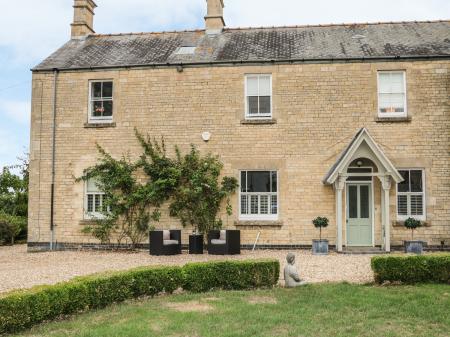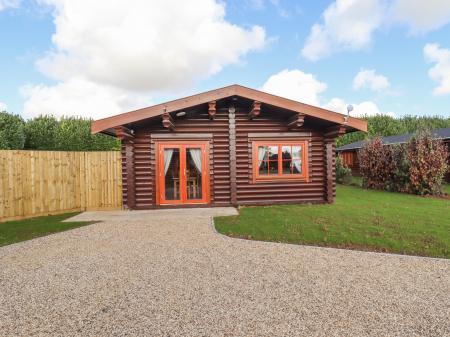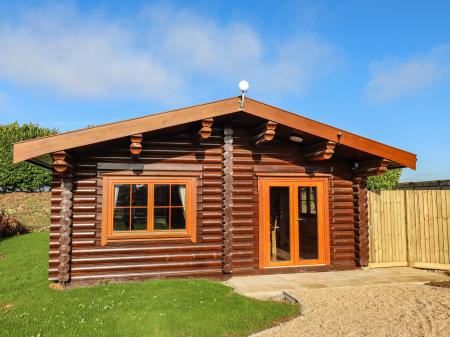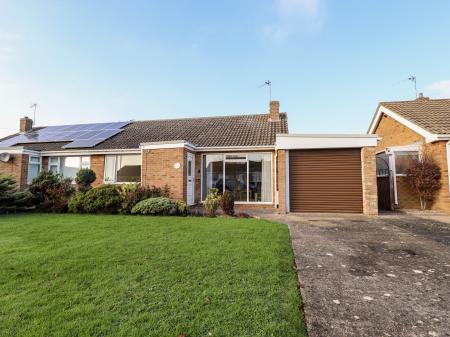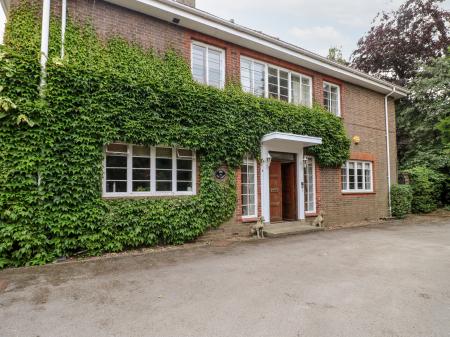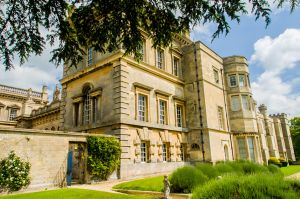
In 1516 Henry VIII gave Grimsthorpe to William Willoughby, the 11th Baron Willoughby de Eresby, to mark the latter's marriage to one of Katherine of Aragon's ladies in waiting. They had one child, a daughter also named Katherine.
When her parents died, Charles Brandon, Duke of Suffolk, purchased the right of wardship over Katherine. Brandon intended to marry her to his own son, the Earl of Lincoln. But when Lincoln died in 1533, the Duke married his ward himself!

In 1539 Henry VIII gave Brandon the disbanded Abbey of Vaudey, situated across the valley from Grimsthorpe. The Duke did not have long to think about what to do with the abbey, for Henry announced his intention to make a Royal Progression of Magnificence through Lincolnshire and Yorkshire, and invited Brandon to become his host.
The Duke used the building materials from the recently dismantled abbey to erect a grand new house to welcome the king, finishing the task in a mere 18 months. Henry was not the last monarch to visit Grimsthorpe; James I and his queen, Anne of Denmark, stayed here, as did Charles I.
In 1660 Robert Bertie, 3rd Earl of Lindsey, rebuilt the north front in classical style. We do not know the architect but the style is similar to the work of William Winde at nearby Belton House.
In 1715 another Robert Bertie, 1st Duke of Ancaster and Kesteven, embarked on a new building scheme. He called in Sir John Vanbrugh, architect of that Baroque masterpiece, Blenheim Palace, to create a grandiose new castle scheme.

Vanbrugh swept away the classical north front to create an imposing facade reminiscent of his work at Blenheim, with two rows of arcades between huge Tuscan double columns.
Only the first side of Vanbrugh's grand scheme was built, for the Duke and then Vanbrugh died, and the project was abandoned. The result is that Grimsthorpe shows wonderful examples of architecture from different eras, depending on which side you look at!
The interiors are sumptuous, with an array of state rooms featuring a superb portrait collection, furniture, and glorious interior decoration. The centrepiece is Vanbrugh's spectacular Hall, a light and spacious area lit by high arcades on two levels.

Other state rooms on view include the dining room and drawing room. The King James Room is named for the large portrait of James I in the style of Van Somer. The Tapestry Room is hung with 18th century Soho tapestries, and there are Flemish wall hangings in the Tapestry Bedroom.
The state rooms are magnificent, but arguably the most memorable rooms on view are the last two. The Chinese Drawing Room is a fantastically ornate chamber with a glittering mix of classical, Gothic, Rococo, and Chinese styles. Across the hall is the Chapel, a quite stunning chamber with superb plasterwork on the walls and ceiling.
The house is set in formal flower and topiary gardens, and the grounds extend to include a woodland garden, an ornamental vegetable garden and orchard. One thing we particularly enjoyed were several small topiary garden areas. The 3000-acre park at Grimsthorpe is immensely popular for families as a place to go bicycling.
Garden: There is a whole 3,000-acre park at Grimsthorpe to explore, in the company of a herd of red deer. Head off on foot or by bicycle, or in the company of a guide on a minibus tour. Mature woodlands, lakes, modern ornamental vegetable garden and orchard, parterres, topiary.






 We've 'tagged' this attraction information to help you find related historic attractions and learn more about major time periods mentioned.
We've 'tagged' this attraction information to help you find related historic attractions and learn more about major time periods mentioned.